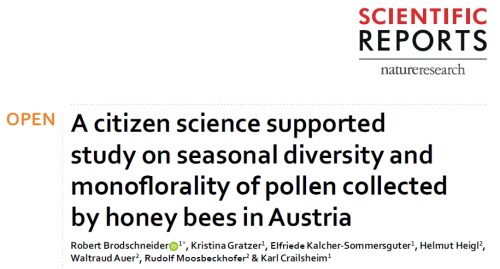
In Insignia we are “Monitoring pesticides and pollen diversity via honeybees” – that is the claim on the starting page of this website. But how can one do that, and what are the advantages to do that with citizen scientists?
In C.S.I. Pollen, we already practiced the cooperation with citizen scientists to study pollen diversity. Results from this preceding study where recently published, you can download the article here. As we focused only on pollen diversity in this study and light microscopy was used to determine pollen origin, the sampling (pollen traps) and storage (drying and freezing) of samples was easier than in Insignia. This is because in Insignia we are establishing pollen origin by molecular methods and we also include pesticide residue analysis which needs more sophisticated methods.
The published article shows what scientists mean with pollen biodiversity: The number of pollen species found at different seasons on different locations, but also the mixture levels of this species, which we calculated as diversity index. Another result is the knowledge in most common pollen sources in Austria and the identification of naturally occurring pollen diets that are made up of one pollen species only. These are more common than we previously thought! Note that the high number of samples (1622) and locations all over Austria were only possible with the help of citizen scientists. All together, we believe that the cooperation of citizen scientist beekeepers is very valuable for research. We are looking forward to continue this cooperation in Insignias second year of field sampling!
Brodschneider, R., Gratzer, K., Kalcher-Sommersguter, E. et al. A citizen science supported study on seasonal diversity and monoflorality of pollen collected by honey bees in Austria. Sci Rep 9, 16633 (2019) doi:10.1038/s41598-019-53016-5
https://www.nature.com/articles/s41598-019-53016-5
